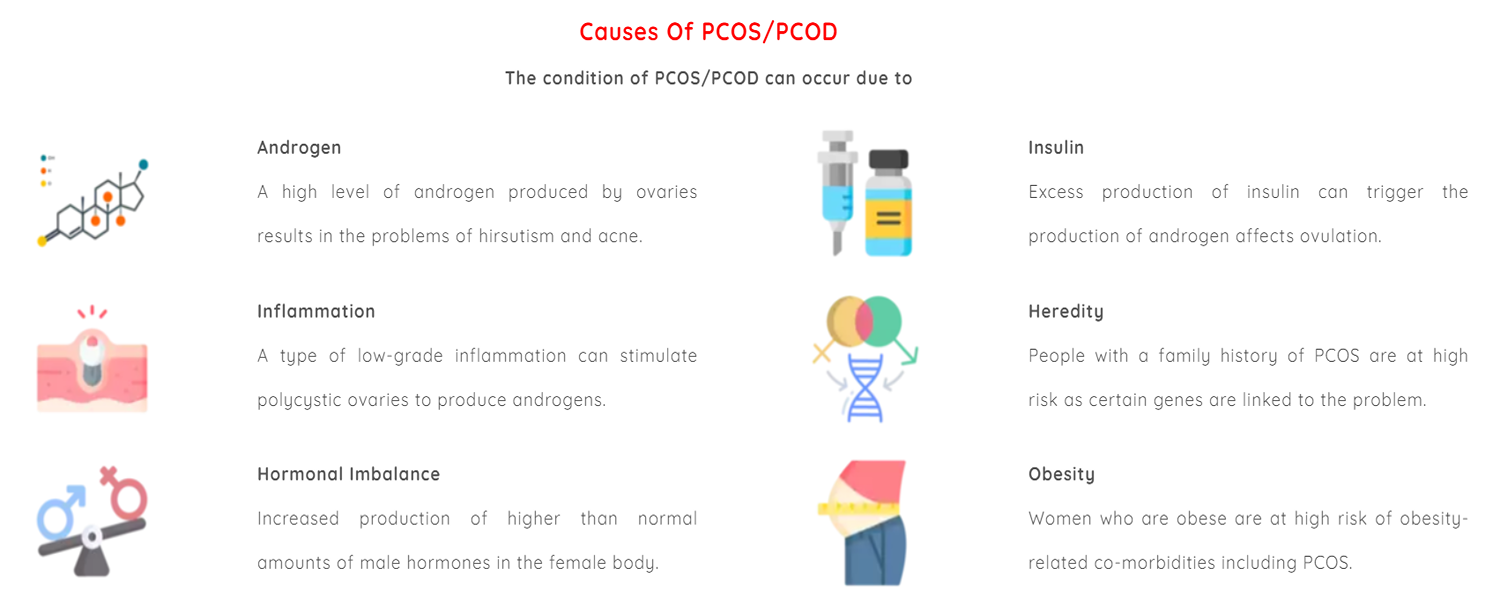Irregular Periods

The typical length of the menstrual cycle, or the time between two consecutive periods, is around 28 days, although this can occasionally vary. When the length of this cycle extends beyond 35 days or when periods are longer in duration, it is referred to as irregular menstruation.
Menopause

he female reproductive system begins to transition toward the cessation of the menstrual cycle, typically occurring around the ages of 45 to 50. When the ovaries cease to release eggs, and there is an absence of menstruation for 12 consecutive months, this milestone is recognized as menopause.
PCOS/PCOD

PCOS (Polycystic Ovary Syndrome) is characterized by the ovaries producing excessive amounts of androgen, which can disrupt the development and release of eggs. On the other hand, PCOD (Polycystic Ovarian Disease) occurs when the ovaries release immature or partially mature eggs, leading to the formation of cysts.
